European Solution for Burning EVs: Drop Them in a Dumpster Filled with Water
Firefighter Ryan Twombley's TTRC invention is a safer way for first responders to fight EV fires. However, EVs have an unpleasant trick: Once the fire is extinguished, it can spontaneously re-ignite—days, weeks, and even months later. A study in Australia found one extinguished EV "reignited 68 days after the initial incident."
In European countries like Belgium, Germany and the Netherlands, and neighboring Norway and Sweden, fire departments aren't taking any chances. An increasingly popular approach there is to haul both a crane and a dumpster to the site of a burning EV. Once the fire is extinguished, the vehicle is craned into the dumpster, which is then topped off with water.
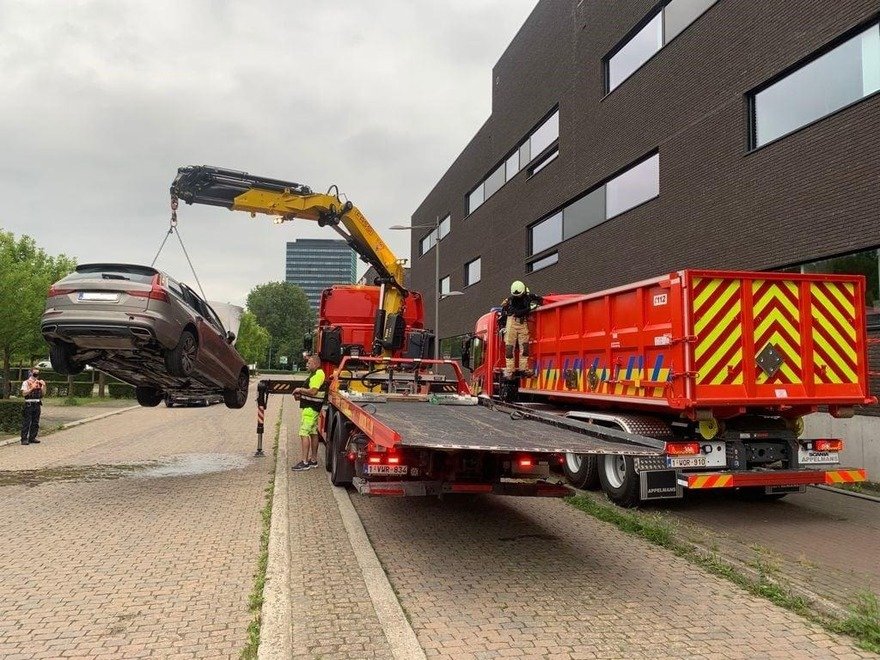
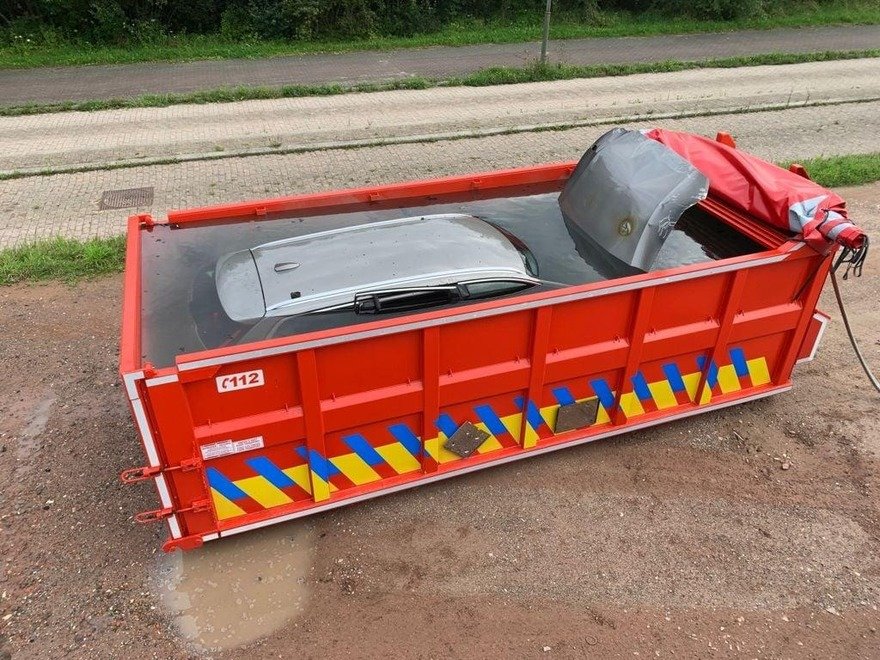
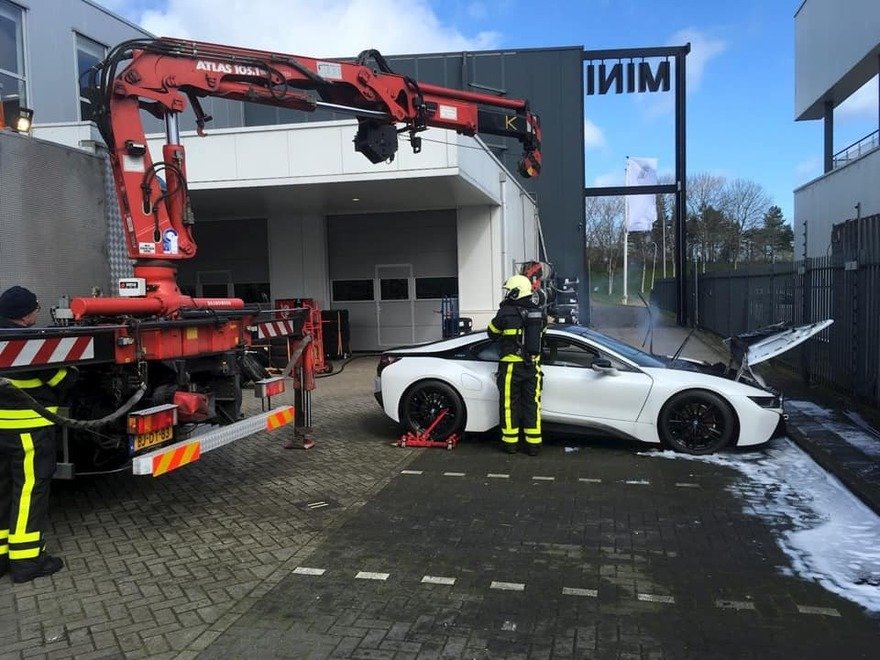
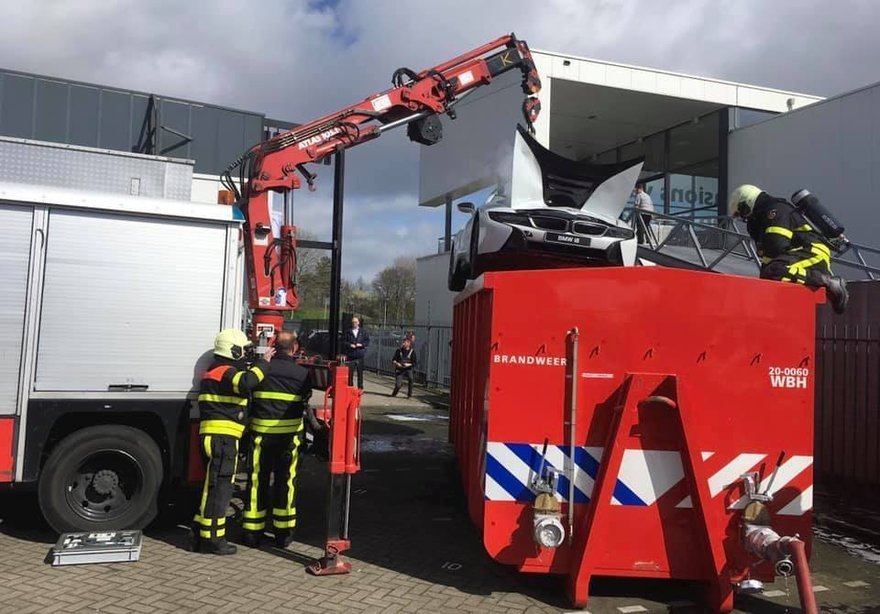
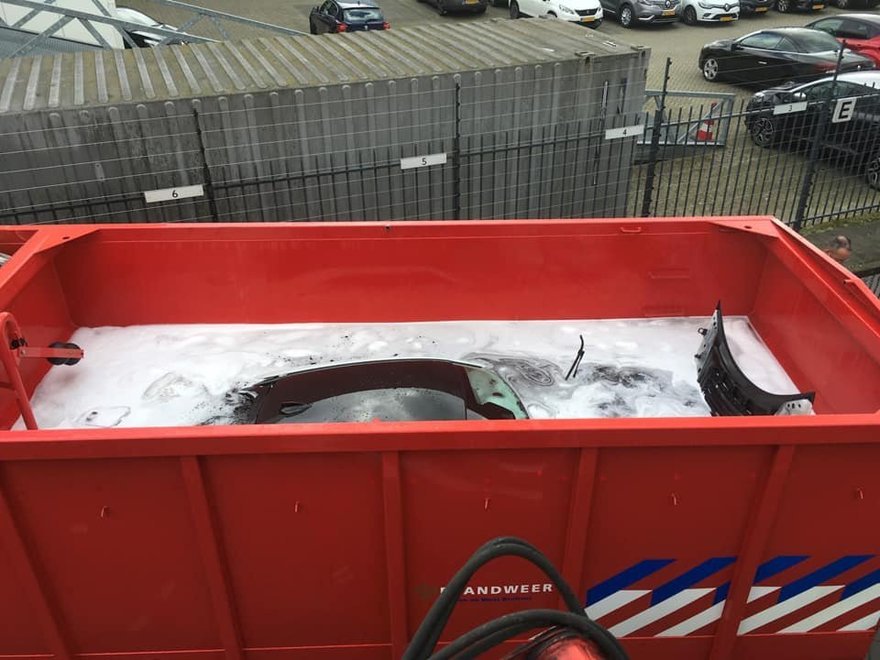
Being fully submerged guarantees that all batteries in the array are cooled simultaneously, reducing the change of reignition. The vehicles are left in the drink for up to 24 hours, then taken to special facilities where they can be safely dismantled and scrapped. The water in the dumpster is then treated as hazardous waste.
It's a smart idea. Worldwide, there have been cases of extinguished EVs reigniting as they're being towed away from the accident scene. This means the tow trucks themselves sustain damage.
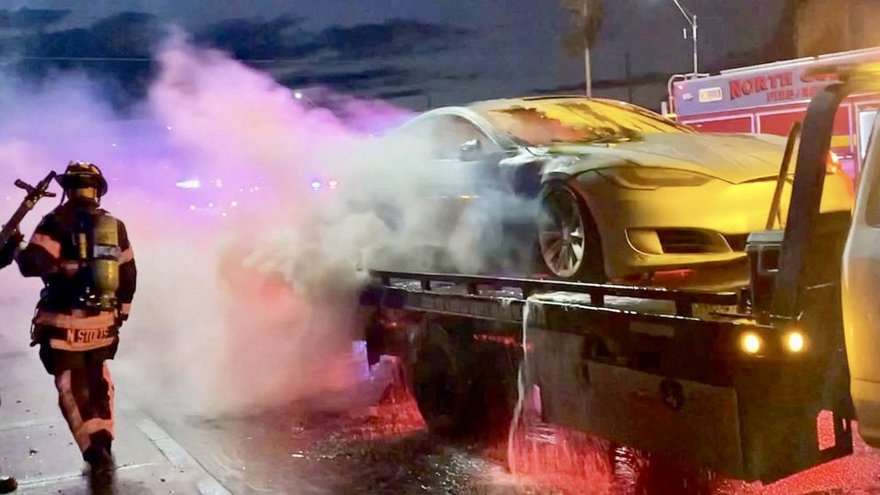
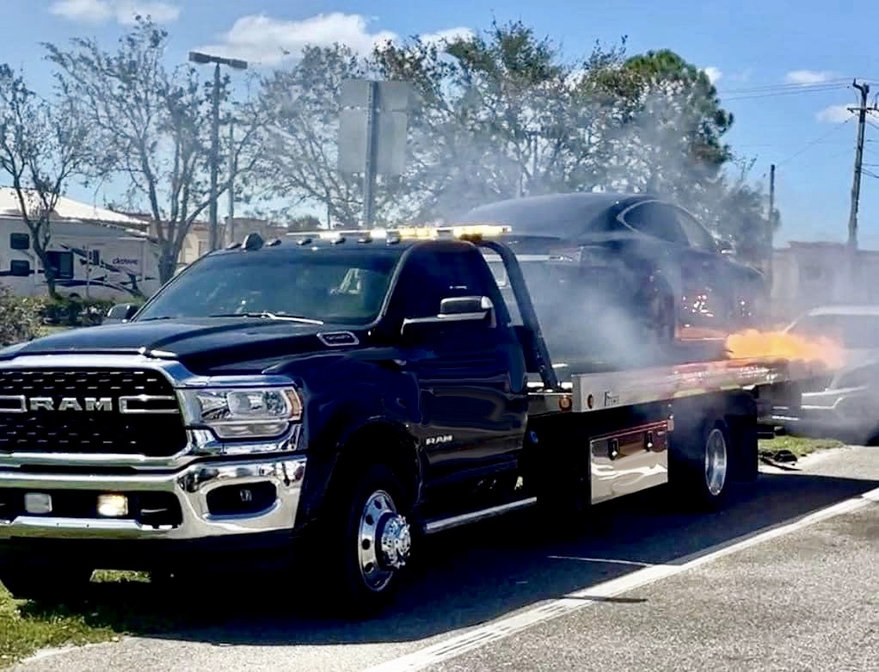
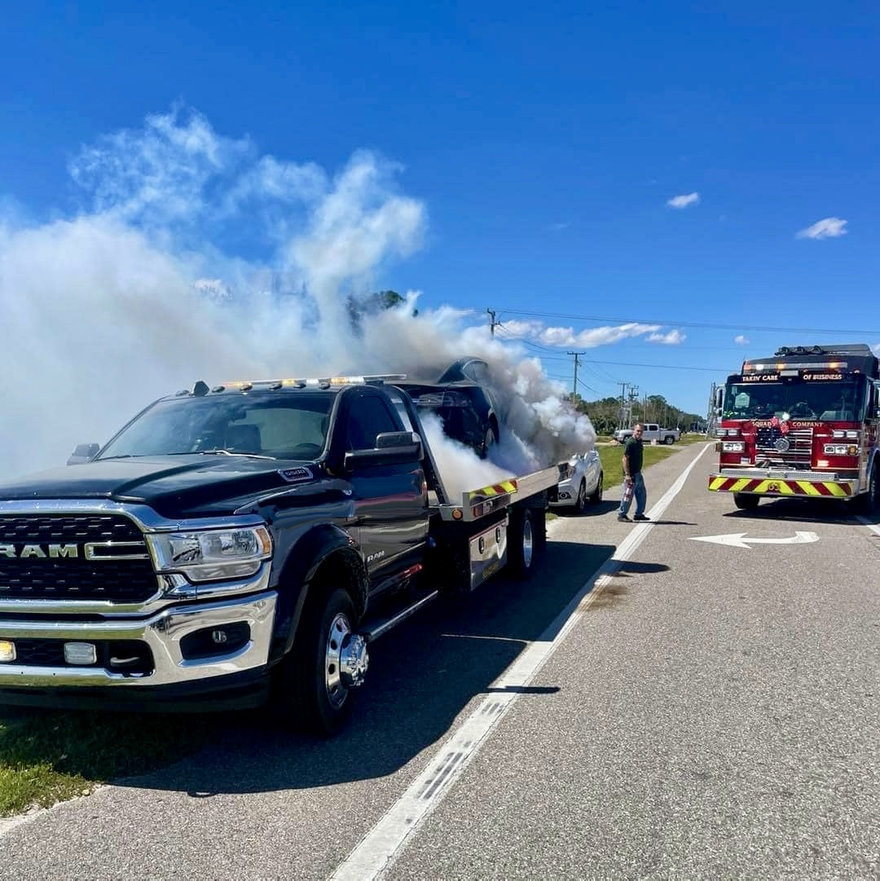
That's led some tow truck drivers to, quite understandably, refuse to haul burnt EVs away. To solve that problem, a British company called EV Cool Tubs provides transportation for damaged EVs in their dedicated dumpsters.
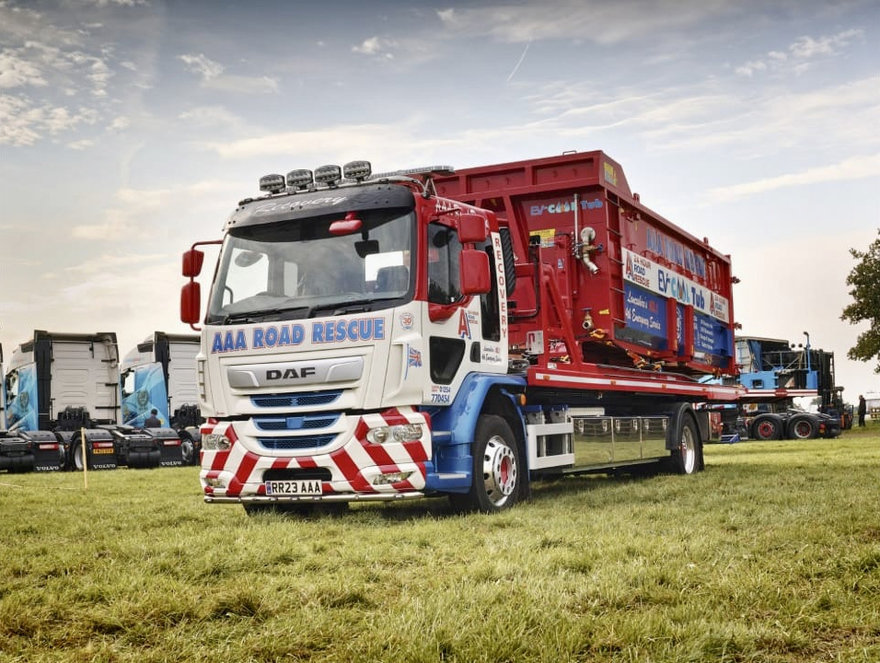
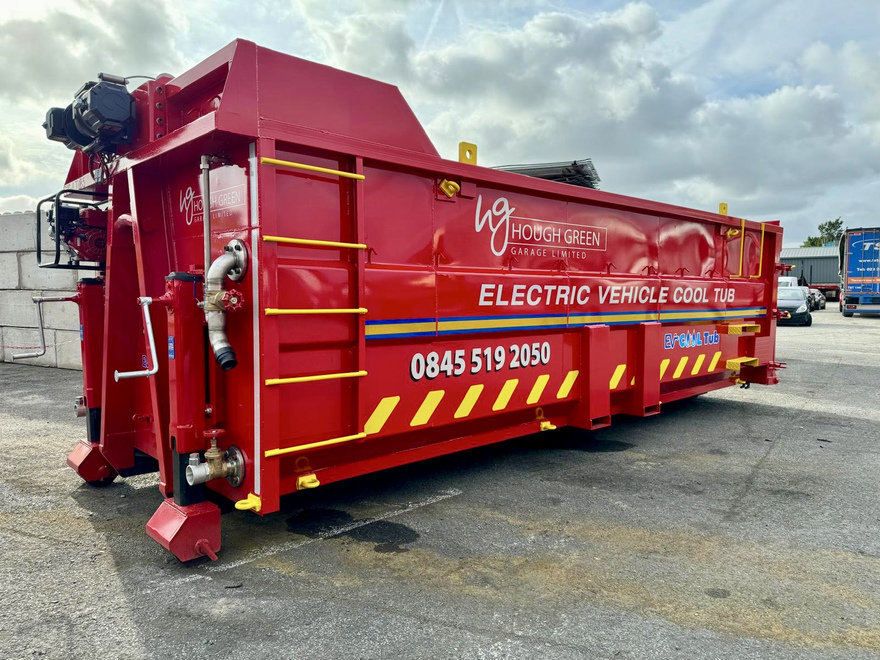
They also pitch the containers to "vehicle storage/body-shop repair compounds, and vehicle assembly plants to store compromised EV battery packs," they write. "They can also be used to store e-bikes and e-scooters that are presently becoming a serious concern nationally for the vehicle recovery industry. These watertight tubs can be flooded by the Fire & Rescue Service in emergency situations."
No such solution is yet widespread in the U.S. At a congressional hearing last year Scott Benavidez, Chairman of the Automotive Service Association's Board of Directors, provided the following warning:
"There are numerous instances in which damaged EVs have caught fire and caused damage to the repair facility at which it was being held, as well as other vehicles in its vicinity. Due to these risks, repair shops are now encouraged to allocate space in their facility where they can isolate EVs for safe storage."
There's a business opportunity there.
-
o1Favorite This
-
Q2Comment
K
{Welcome
Create a Core77 Account
Already have an account? Sign In
By creating a Core77 account you confirm that you accept the Terms of Use
K
Reset Password
Please enter your email and we will send an email to reset your password.

Comments
or maybe re think the engineering and pull these pigs off the road until they're designed properly ? and --- unlike a regular car, not that i'm any fan of combustion --- these things are a total write off after they catch on fire and have to be fully immersed in water for 24 hours ? stupidus americanus continues unabated.
Ok, here's my crazy idea: all EVs should be required to have a built-in battery irrigation system for emergency dousing.